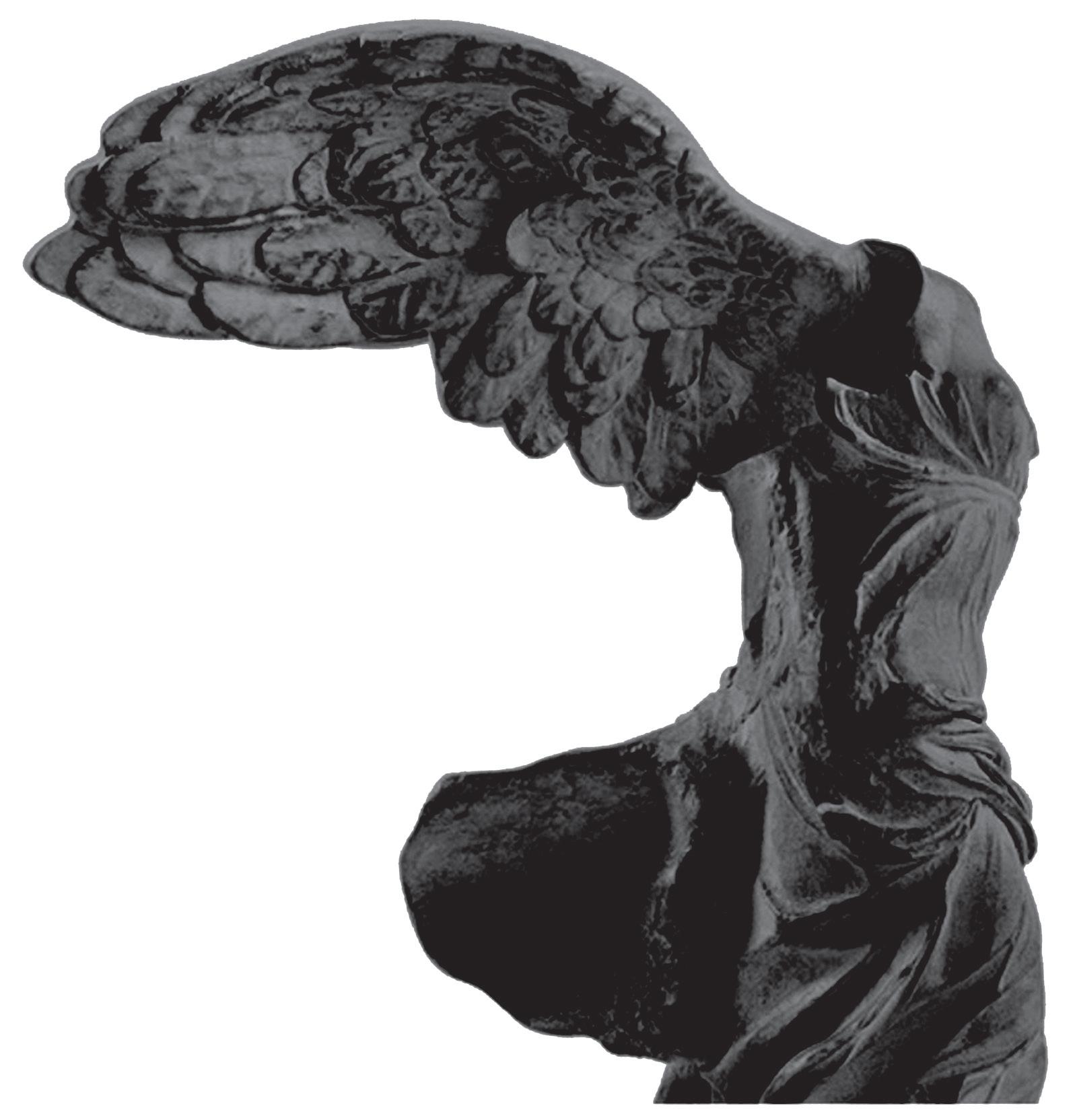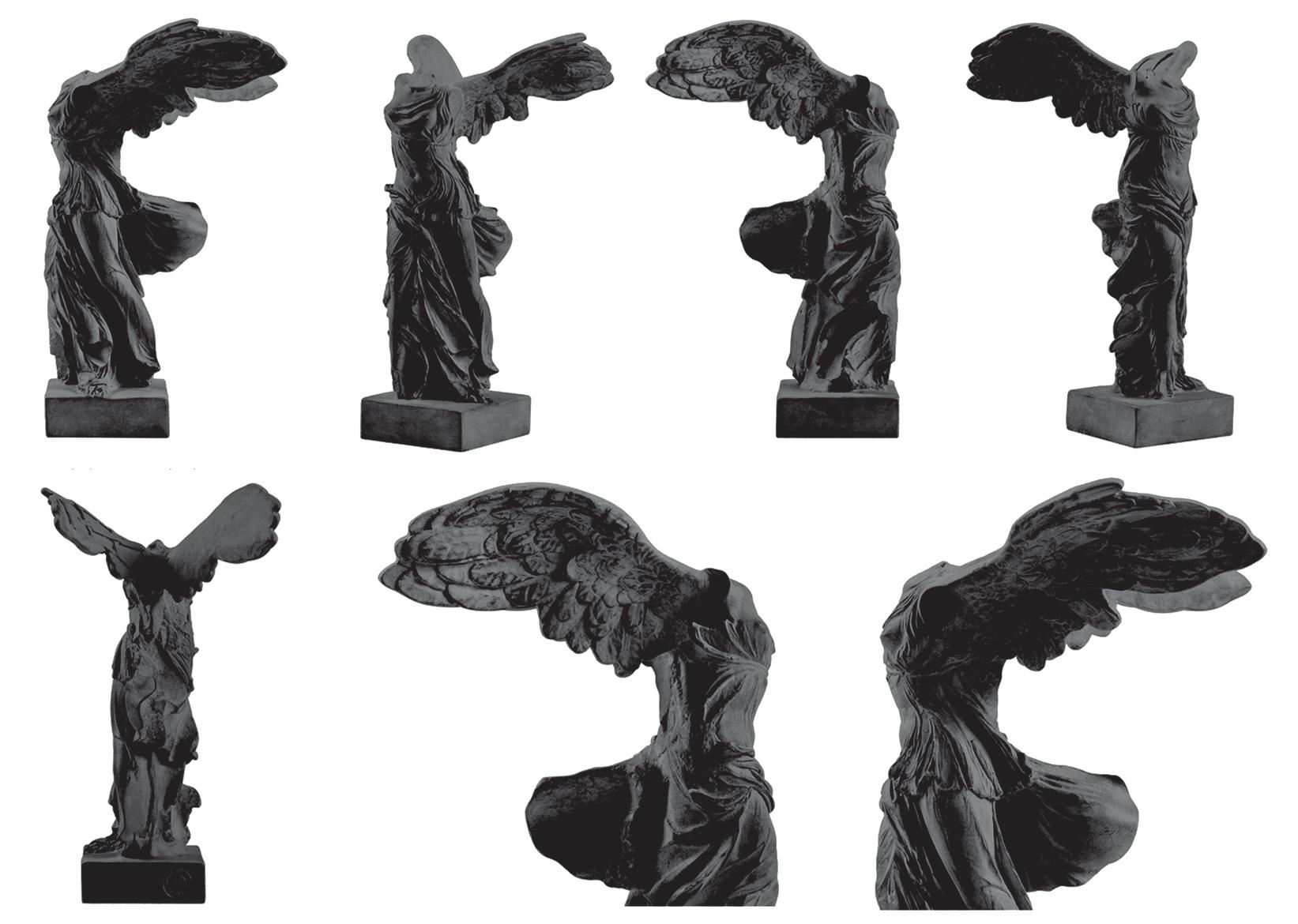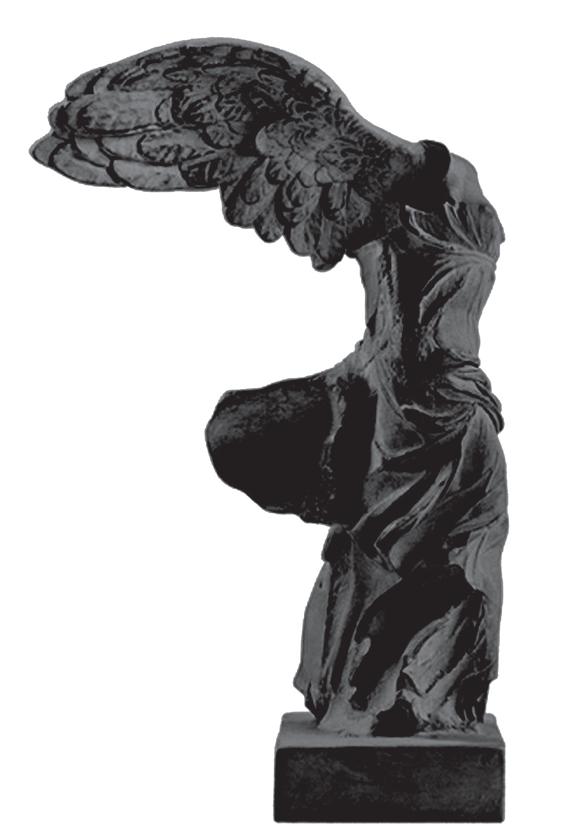

Black Nike
in collaboration with
AKIM MONET
Produced
Ateliers d’art de la Réunion des musées nationaux - Grand-Palais
Akim MONET’s Black Nike
From a historical perspective, starting from when appeared the Nike of Delos (6th century BC) -the rst known iteration of a winged female gure, until the creation of one of the most celebrated sculptures of all times, the Winged Victory of Samothrace (2nd century BC), lived some of the most in uential thinkers in western culture. Announced by Nike, the Greek goddess of strength, speed, and victory, who ying around battle elds rewarded the victors with glory and fame, Pythagoras, Socrates, Plato, and Aristotle constituted an almost unbroken chain that lasted less than 300 years. It is be tting therefore, that the Winged Victory of Samothrace is presented here once again as the herald of the impeding transformations of our species. As pointed out by the art historian H. W. Janson, Nike creates a deliberate relationship to the imaginary space around the goddess –all the more so because much like Rodin’s iconic Homme qui marche, she is headless –allowing for the viewer to complete the picture through the power of the imagination. Taking measure of the gravitas of the present moment, Akim Monet, in collaboration with the Ateliers d’art de la Réunion des musées nationaux - Grand-Palais (formerly Les Ateliers de Moulage du Louvre), here present the Louvre Nike in the form of a stone-based composite casting, using slate, the nest grained


foliated metamorphic rock as the main component. As the name of this type of material implies, it appears through a transformative process. Deep beneath the Earth’s surface, subjected to high temperatures and the great pressure of the rock layers above, it can form from tectonic processes such as continental collisions, which cause horizontal pressure, friction and distortion. It is also formed when rock is heated up by the intrusion of hot molten rock (magma) from the Earth’s interior. Metaphorically therefore, in addition to the notion of transformation, slate conjures the idea of ‘coming from within’ the entrails of mother-Earth; it is a product of the original matrix. In regards to its color, black is the darkest color, resulting from the absence or complete absorption of light. It this way, it is evocative of black holes, which may have been the birthplace of the universe. So although ominous at times, the color black also represents strength, seriousness, power, and authority. Black is a formal, elegant, and prestigious color. The color black can evoke strong emotions and it can also be overwhelming –a bit like the feeling one can derive when contemplating the extraordinary period in our evolution that we are just entering...
MONET (b. 1968)
Black Nike, 2017 Slate-based composite - h. 244 cm
Produced in collaboration with the Ateliers d’art de la Réunion des musées nationaux - Grand-Palais
Akim
Akim MONET (b. 1968)
Black Nike, 2017 Slate-based composite
Produced in collaboration with the Ateliers d’art de la Réunion des musées nationaux - Grand-Palais

The


making
of the Black Nike
Within the context of the recent € 5 million conservation treatment of the Musée du Louvre Winged Victory of Samothrace (see the ARTE documentary here), the original marble sculpture was digitally scanned to a level of accuracy suf cient to distinguish the original tooling traces. From this high-


de nition scan, a 3D print was produced. The Ateliers d’art de la Réunion des musées nationaux - Grand-Palais created a mold from the 3D print, and from this they produced a gesso cast, which was then painstakingly re-worked by hand, in order to match the restored marble masterpiece. From this reworked gesso, a highly accurate mold was produced. It is this that is used to produce

the present slate-based composite castings. Each casting therefore, bears the round marking “MOULAGE MUSEE DU LOUVRE” inscribed around the logo of the Réunion des musées nationaux.



